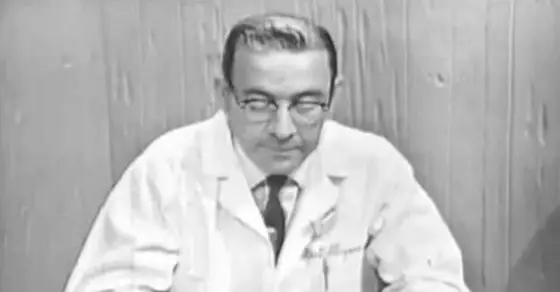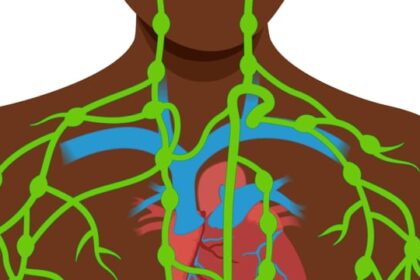Many years ago at a family gathering I was chatting with one of my uncles and he was sharing how his grandfather (my great grandfather) was both a farmer and a doctor. I found that fascinating. He owned farmland south of Detroit, Michigan which the Government later bought and named it King Road, which still exists to this day.
I loved that he was both a doctor during the day and a farmer as a hobby on the side. The two really do go together hand-in-hand.
I was speaking with my uncle about certain remedies that I had utilized that weren’t utilized enough and he brought up my great grandfather (his grandfather) and shared that when he was a kid there was one remedy that no one seems to use anymore that worked very well.
Whenever he had a tummy ache, or other abnormalities his grandfather (also his doctor) would have him drink castor oil.
He said that it worked like a charm and doesn’t know why it’s not shared anymore.
Now, Dr. Barbara O’neil shares that we can use castor oil topically on certain parts of our body in order to support the body internally. It works both externally and internally.
Old Remedies Before the Pharmaceutical Industry: A Look into Traditional Healing
Before the rise of modern pharmaceuticals, communities around the world relied on nature, observation, and shared knowledge to treat ailments. Herbalism, food-based medicine, physical therapies, and spiritual practices formed the foundation of healthcare in most societies. These remedies, often passed down through generations, have stood the test of time and are still used today by those seeking natural alternatives.
One place where you can explore this rich history of natural healing is Greenfield Village in Dearborn, Michigan. This living history museum offers a fascinating glimpse into the remedies that were once widely used, long before the pharmaceutical industry came into existence. It preserves traditional methods and showcases how early Americans, particularly in rural areas, dealt with illnesses and maintained health using what was available in their environment.
Here, we’ll explore some of these old remedies, many of which are highlighted in Greenfield Village’s exhibits.
1. Herbal Teas for Digestive Ailments
Herbal teas were a cornerstone of early medicine. Peppermint, chamomile, and ginger teas were used to soothe digestive issues like nausea, bloating, and indigestion. These herbs are still widely used today for their calming and anti-inflammatory effects.
- Peppermint Tea: Known for relaxing the muscles of the digestive tract, helping with bloating and gas.
- Chamomile Tea: Used for its calming effects on both the digestive system and the mind, making it a remedy for upset stomachs and anxiety.
2. Honey and Vinegar Tonic
A mixture of honey and apple cider vinegar was commonly used as a tonic to treat various ailments, including sore throats, digestive problems, and even as a general health tonic. Honey’s antibacterial properties combined with vinegar’s acidic nature created a potent remedy that could relieve sore throats and coughs while boosting overall vitality.
- Honey: Natural antibacterial, used to treat wounds and infections.
- Vinegar: Its acidic nature was believed to kill pathogens and aid digestion.
3. Willow Bark for Pain Relief
The bark of the willow tree was used to reduce fevers and relieve pain, much like modern aspirin. Willow bark contains salicin, a compound that is converted into salicylic acid in the body, which has pain-relieving and anti-inflammatory properties.
This remedy is one of the best examples of how traditional practices led to modern drugs. Aspirin, one of the first pharmaceutical drugs, is a synthetic version of willow bark’s active ingredient.
4. Onion and Garlic Poultices
Onion and garlic were often used to treat infections and respiratory problems. These pungent vegetables were applied as poultices to the chest to help with congestion and bronchitis. Both garlic and onions have antibacterial properties, making them ideal for treating wounds and infections as well.
- Garlic: Known for its strong antimicrobial properties, garlic was often used to fight infections and boost the immune system.
- Onions: Used to treat colds and infections, believed to draw out toxins from the body.
5. Herbal Salves and Poultices
Herbs such as comfrey, plantain, and calendula were commonly used to create healing salves for cuts, bruises, and other skin ailments. Comfrey, known as “knitbone,” was particularly valued for its ability to promote healing in broken bones and wounds. These salves would be applied directly to the skin, often using lard or beeswax as a base to make the herbs stick.
- Comfrey: Known for promoting cell regeneration and healing of bones and tissues.
- Plantain: Used to treat bites, stings, and inflammation due to its anti-inflammatory and antimicrobial properties.
6. Elderberry for Immune Support
Elderberry was a popular remedy for colds and flu. This berry contains high levels of antioxidants and has antiviral properties. Early settlers and Native Americans used elderberries in syrups and tinctures to fight off infections and strengthen the immune system.
Even today, elderberry syrup is a go-to remedy during cold and flu season.
7. Lavender for Relaxation and Sleep
Lavender has long been used for its calming properties, making it an ideal remedy for stress, anxiety, and sleep issues. Lavender sachets were often placed in bedding to promote a restful night’s sleep, while lavender oil was used to soothe headaches and promote relaxation.
8. Epsom Salt for Muscle Aches
Epsom salt baths have been used for centuries to relieve muscle aches, reduce inflammation, and promote relaxation. Rich in magnesium, Epsom salt is absorbed through the skin, helping to soothe sore muscles and improve circulation.
9. Cider Vinegar and Dandelion for Detoxification
Dandelion and apple cider vinegar were used to cleanse the liver and stimulate digestion. Dandelion, in particular, was valued for its diuretic properties, helping to flush out toxins and reduce water retention. This practice is akin to today’s detox diets, with many still using these natural ingredients to promote liver health and digestion.
10. Sage for Sore Throats
Sage was often brewed into a tea or gargle to soothe sore throats and coughs. The antibacterial properties of sage made it an ideal remedy for respiratory infections, and its astringent quality helped reduce inflammation in the throat.
A Visit to Greenfield Village
At Greenfield Village, visitors can step back in time and see many of these remedies in action. The village not only showcases traditional healing methods but also gives insight into how people lived day-to-day, relying on their knowledge of plants and nature to maintain their health. The village’s Herb Garden is a particularly fascinating spot, filled with medicinal plants that were commonly used in the 19th century. Knowledgeable guides demonstrate how these plants were harvested and prepared for various remedies.
You can also see historical reenactments of doctors and healers treating patients using these early methods. In many ways, these practices laid the groundwork for modern medicine, combining an understanding of the body, environment, and natural resources.
Visiting Greenfield Village offers a deep appreciation of how far medicine has come, yet it also reminds us of the value of these time-tested remedies that still have relevance today.
Conclusion
Before pharmaceuticals, early Americans relied on what they had around them—plants, herbs, and common kitchen ingredients—to heal and maintain health. Many of these remedies, such as herbal teas, poultices, and tonics, are still in use today, either in alternative medicine or as complements to modern treatments. The wisdom of the past continues to inspire new generations seeking holistic and natural approaches to well-being.
Greenfield Village in Dearborn, Michigan, beautifully preserves and showcases this legacy of traditional medicine, allowing us to explore the remedies that our ancestors relied upon.





